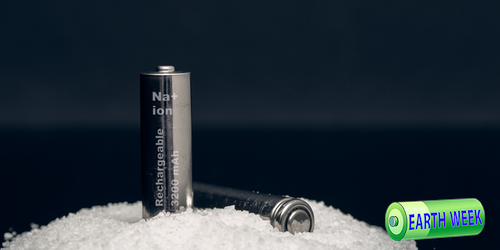Developed in the 1980s and recognized by the 2019 Nobel Prize in Chemistry, the lithium-ion battery has become one of the most commonly used batteries in the world. It powers most phones and laptops, and it has driven the surge in electric vehicle production. Like most batteries, a lithium-ion battery consists of three main components: a positive electrode (cathode), a negative electrode (anode), and an ion-transporting medium (electrolyte) in between the two. There are various choices for the materials used for each component, but the most common design has an anode made of graphite (carbon); a cathode made of a lithium-containing metal oxide, such as lithium cobalt oxide or lithium manganese oxide; and an electrolyte that combines a lithium-based salt and an organic solvent.
When the battery is working (discharging), lithium ions come out of the anode and move through the electrolyte to the cathode where they are absorbed. When the lithium ions enter the cathode, a chemical reaction occurs that essentially “draws” electrons into the cathode from the connecting wire. During charging, electrons flow out of the cathode, freeing the lithium ions so that they flow back into the anode.
Lithium-ion batteries have a number of attractive attributes. First and foremost, they are rechargeable and have a high-energy density of 100–300 watt hours per kilogram (Wh/kg), compared to 30–40 Wh/kg for common lead-acid batteries. That high density means your laptop or cellphone can have a battery that lasts throughout the day without weighing you down. In the case of electric vehicles, a typical battery can weigh around 250 kg and supply around 50,000 Wh of energy, which is typically enough to drive 200 miles (320 km). Many environmentalists see this capability as our ticket for transitioning away from fossil fuels.
However, not everything about lithium-ion batteries is an environmentalist’s dream. The main issue involves the materials, since the extraction of lithium is resource intensive [3], and the mining of some of the metal ingredients is polluting [4]. There is also a lack of recycling infrastructure for today’s lithium-ion batteries, Meng says (see Q&A: The Path to Making Batteries Green). “The carbon footprint and the sustainability of the current way of making lithium-ion batteries is less than ideal.”
In addition to environmental concerns, the battery market is highly volatile, in part because the world has a limited number of lithium-rich regions. During the COVID pandemic, for example, the supply chain was cut off, and the price of lithium shot up. There are similar concerns over other lithium-ion-battery materials, such as nickel, copper, and graphite, which are also limited resources.
Lithium-ion alternatives include solid-state batteries (in which the liquid electrolyte is replaced by a solid one) and magnesium-ion batteries (in which magnesium ions replace lithium ions). Most of these options are still under development. And some of them also have issues concerning the availability of resources.
By contrast, sodium is abundant in seawater (although a more usable source is sodium ash deposits, which can be found in many regions of the world). And because sodium shares so much chemistry with lithium, sodium-ion batteries have been developing quickly and are already being commercialized. “Compared to other lithium-ion alternatives, I think sodium is at the forefront,” says Marcel Weil, who assesses the environmental impact of batteries at the Karlsruhe Institute of Technology and the Helmholtz Institute Ulm in Germany.




